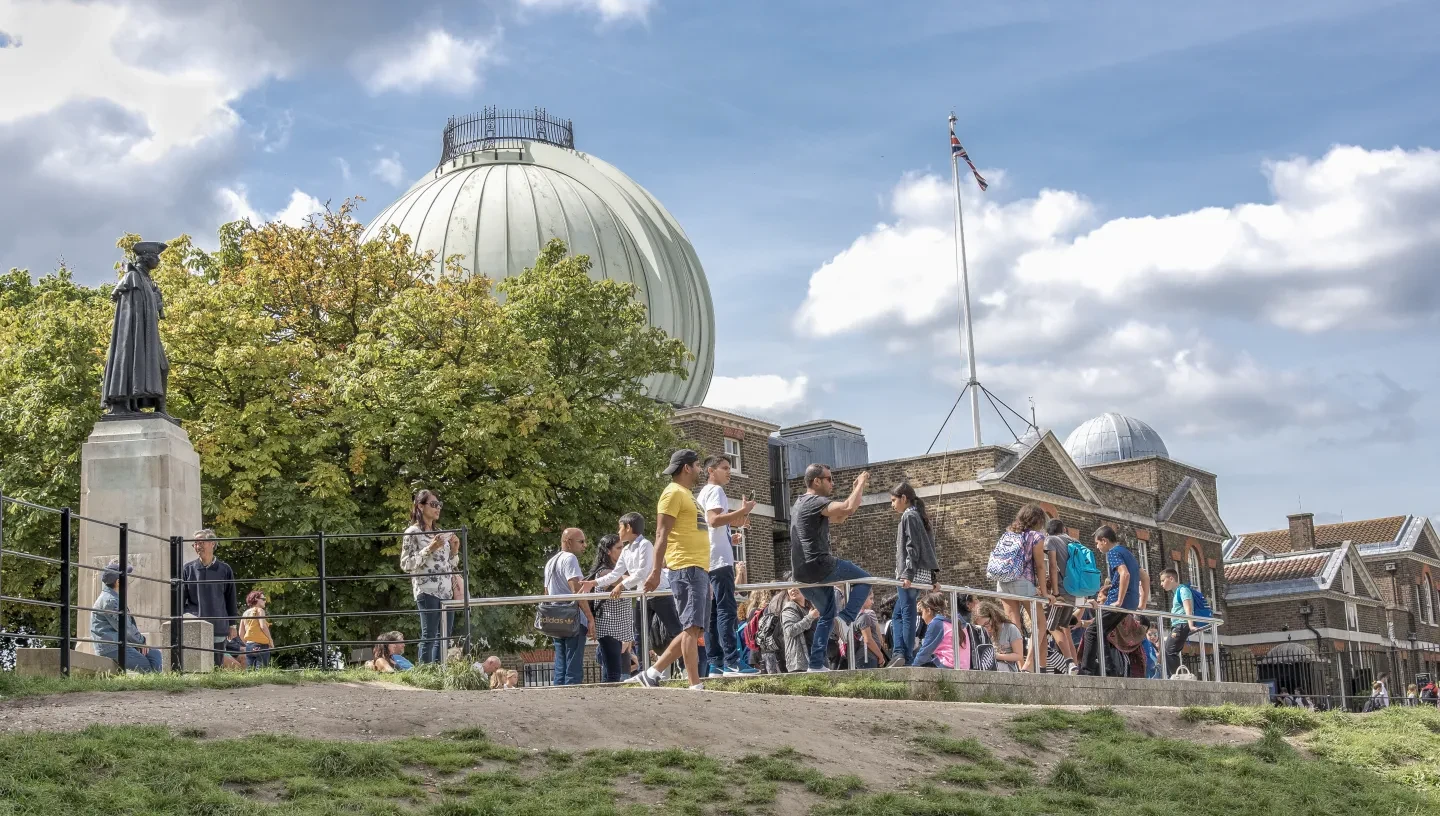
Discover the history and stories behind the Royal Observatory's weathervanes
Probably the best known - or at least the most photographed - of the weathervanes at the Royal Observatory Greenwich is that which sits on top of the time ball on Flamsteed House.
But there are two others that are worth a closer look. They date from the turn of the last century and, as well as being decorative, make interesting allusions to aspects of the Observatory's history.
Weathervane on the Altazimuth Pavilion depicting Halley's Comet

The weathervane on top of the Altazimuth Pavilion is modelled on Halley's Comet, as depicted in the Bayeux Tapestry.
It was put up in June 1901, a few years after the building was completed, but in time for the comet's return in 1909.
There is a clear link with the Observatory's history since Halley was the second Astronomer Royal, although his famous prediction was made fifteen years before he took up the post.
It is not clear why the illustration from the Bayeux Tapestry was used as inspiration, although its shape is ideal for catching the wind and echoes that of the weathervanes of the Old Royal Naval College down the hill.
Weathervane on the South Building depicting the Great Harry

The second vane is sited on top of the dome of the South Building, or the New Physical Observatory as it was once known.
This building was erected in stages between 1890 and 1899, with the vane being completed in March 1897. This time, the allusions to the Observatory's history are a bit less obvious, for it depicts a ship.
However, it is not any old ship, but Henri Grace a Dieu, or the Great Harry, a flagship of Henry VIII that was probably the most famous historical vessel before the Mary Rose's resurrection stole the limelight (as suggested by the NMM's collection of prints of this ship).
The original purpose of the Royal Observatory was to solve a navigational problem, and throughout the 19th century, it was administered by the Admiralty.
Henry VIII had founded the Admiralty, and the Great Harry's master, Thomas Spert, was the first Master of Trinity House, a foundation that had the safety of seafarers at its heart. In addition, there is a local reference as the ship was built at Woolwich.
The naval links are brought out elsewhere in these buildings, particularly in the rounded 'porthole' windows below the domes - both were designed by William Crisp, an engineer in the Admiralty's Department of Works. The Royal Observatory Greenwich's modern link with the National Maritime Museum, as well as its history, means that this nautical theme is still entirely appropriate.

